“A Payment Has Been Posted On Your Card” is an email scam campaign incorporated by hackers for threatening innocent users and blackmailing them for money. This nasty virus send fake emails on the targeted system to scare users and intimidate them with potential release of sensitive personal information. This particular virus is also known as sextortion malware.
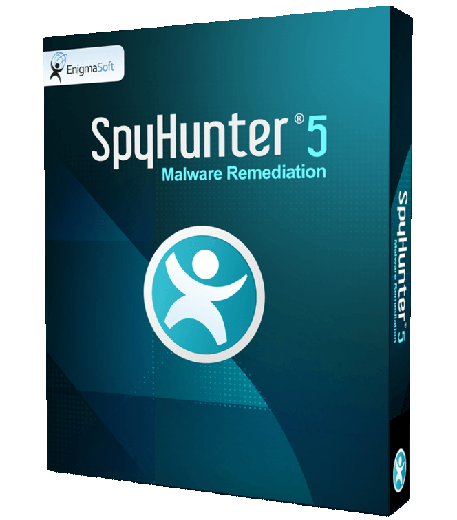
Threats like “A Payment Has Been Posted On Your Card” Email Scam Virus keep getting back on PC if all associated files are not removed. So you are advised to use a powerful Malware Removal Tool to run a thorough scan of your PC and delete all threats at once.
Special Offer SpyHunter 5 Anti-Malware offers a 7-day fully-functional Free Trial. Credit card required, NO charge upfront. No charge if you cancel up to two business days before the trial period ends. Read SpyHunter 5 Review, and Free SpyHunter Remover details.What is “A Payment Has Been Posted On Your Card” Email Scam?
The “A Payment Has Been Posted On Your Card” Email Scam is an email intimidation virus which is combined with a Trojan malware. This nasty virus send fake emails to victims claiming to know their email ID and password through data breach performed a Trojan malware. It implies that it gained the full access of the victim’s computer and even access the webcam on infected device.

This email scam virus claims to have access to the personal and embarrassing details of the users along with web cam video of the victim. It threatens to make those details public if user does not pay a significant amount through BitCoin as ransom. “A Payment Has Been Posted On Your Card” Email Scam virus clearly state that this is the only way to stop the malicious activities on the infected computer.
More about this Threat
“A Payment Has Been Posted On Your Card” Email Scam may not have the leverage it claims to hold against the victims but the thought of getting exposed scare users more than virus itself. Threats like this have gained quite popularity among hackers these days for the very same reason. No one want’s to be exposed of their personal and intimate details and this why threats like “A Payment Has Been Posted On Your Card” Email Scam virus harass innocent users.
The email from this virus accept using a Trojan malware to intrude the targeted system for stealing personal information of the user. It is a fraud tech scam malware which is only aimed to scare users and cheat their money. In most of the cases, people get scared by “A Payment Has Been Posted On Your Card” Email Scam messages and end up paying extortion. It is very much possible that it has already blocked your anti-virus and firewall security due to which your regular anti-virus will not find any malware.
Threats Associated to this infection
Claims of “A Payment Has Been Posted On Your Card” Email Scam virus might not entirely false. Though it has secret information such as email ID, password and even access to your webcam, it is not necessary that it has any intimating video. As it threaten to make your personal details public but if you know that allegations made by this virus are false then you have nothing to worry about. You can simple change all your passwords, reset your browser. Then finally you need to find and remove “A Payment Has Been Posted On Your Card” Email Scam Scam virus from your system along with the Trojan horse which is associated with this infection.
“A Payment Has Been Posted On Your Card” Email Scam: Threat Analysis
| Name | “A Payment Has Been Posted On Your Card” Email Scam |
| Type | Email Scam |
| Threat Level | High (source to distribute other harmful threats). |
| Symptoms | Slow computer, Bogus emails, unresponsive programs, unexpected errors, fake pop-ups, browser redirection. |
| Distribution | It could be distributed through spam emails, bundled freeware, porn, or torrent sites. |
| Damage | Steal personal data, corrupt system files, bring other threats and provide remote access to hackers. |
| Removal | Download SpyHunter 5 Anti-Malware |
How “A Payment Has Been Posted On Your Card” Email Scam Infect your PC?
This cunning threat mostly enter your system secretly bundled with other programs. You may never know that a free program you installed on your PC is carrying “A Payment Has Been Posted On Your Card” Email Scam Scam virus. This tricky malware infection hide its notification and secretly get installed in background. This nasty malware could also take help of Trojan malware to intrude your system security and steal your personal details.
This dubious “A Payment Has Been Posted On Your Card” Email Scam could also be brought by other low level malware infection that only redirect your browser on unsafe websites that host malicious script. Browsing to porn or torrent sites and downloading cracked games or software could also be reason behind this malware.
Is “A Payment Has Been Posted On Your Card” Email Scam dangerous for my PC?
Yes, it is quite dangerous for the infected computer system. Once inside your PC, “A Payment Has Been Posted On Your Card” Email Scam virus will start creating several harmful problems. It can hijack all web browsers including Chrome, Firefox, Opera, Edge, Safari and others. It will slow down your system, modify DNS settings, create new registry keys and many others. It can track your browsing habits and cookies history to collect personal information.
It can steal your financial details and send to hackers. Apart from this, “A Payment Has Been Posted On Your Card” Email Scam may allow cyber crooks to remotely access your system by creating backdoor your machine. It will bring several other new viruses to feast on your suffering computer. So it is advised to immediately remove “A Payment Has Been Posted On Your Card” Email Scam virus from your computer.
How To Remove “A Payment Has Been Posted On Your Card” Email Scam Virus
“A Payment Has Been Posted On Your Card” Email Scam is a dangerous malware that can cause major damage to your computer. This nasty threat will bring several new problems in your PC, so it very important to delete this malware permanently. When this kind of malware invades your system, it will make your system vulnerable. This nasty malware is capable of bringing other harmful viruses on your system without your consent. It can completely obliterate your system performance in no time. This virus also has tendency to hide its malicious copies at various locations on your PC under different names. It is not an easy job to find and remove those virus related files manually.
In this guide, you will find instructions for two very different techniques to get rid of “A Payment Has Been Posted On Your Card” Email Scam infection . The first one is the Automatic Removal which is quite fast, effective and accurate. The second method is Manual Removal which usually takes lots of time, needs technical expertise, and often fails to give desired results. However, it is advised to take help of both techniques to ensure complete removal of the malware from your system. In case you are not handy with system operations and techincal stuff, just opt for the automatic malware removal process to eliminate “A Payment Has Been Posted On Your Card” Email Scam infection. The Automatic Removal process is fast, precise, and error free whereas the Manual Removal process is time-consuming and a slight mistake can corrupt the entire operating system. We advised you to take the help of both methods to completely eliminate the virus from your PC.
Automatic “A Payment Has Been Posted On Your Card” Email Scam Removal Guide
As you already know that, “A Payment Has Been Posted On Your Card” Email Scam is a notorious and cunning malware that is not hard to remove easily by any user through manual means. This virus can keep coming back on the infected computer through files and shortcuts or settings that it has already created on your machine. Removing all those at once is the only way to get rid of this infection and stop it from getting on your system ever again.
So the best way to remove “A Payment Has Been Posted On Your Card” Email Scam effectively is to use a powerful Automatic Removal Tool and save your time and efforts. This software is a well-trusted and very powerful anti-malware program that can detect all hidden threats like Trojan, Ransomware, Worms, Spyware, Rootkits, and many others. It also provides 24X7 customer support and one-on-one Spyware HelpDesk support for Custom Malware removal. Advanced System Guard feature detects and removes threats in real-time. It has a very User-Friendly Interface and regular Malware updates make it most effective against the latest malware attacks.
How SpyHunter 5 Anti-Malware Works
- First, you need to click on the below download button to get the software.
Geek’s Recommendation
Some time threats like “A Payment Has Been Posted On Your Card” Email Scam keep getting back on the machine if all associated files are not removed. So you are advised to use a powerful Malware Removal Tool to run a thorough scan of your PC and delete all threats at once.Compatible with: Windows 11/10/8/7 (32 Bit and 64 Bit)
- Then double-click on the installer you downloaded to install the program.

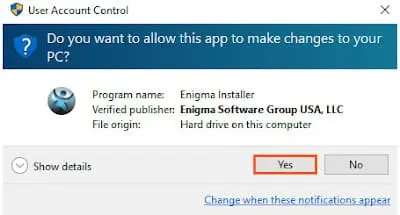
- Launch Anti-Malware application and Start Scan Now of your PC.
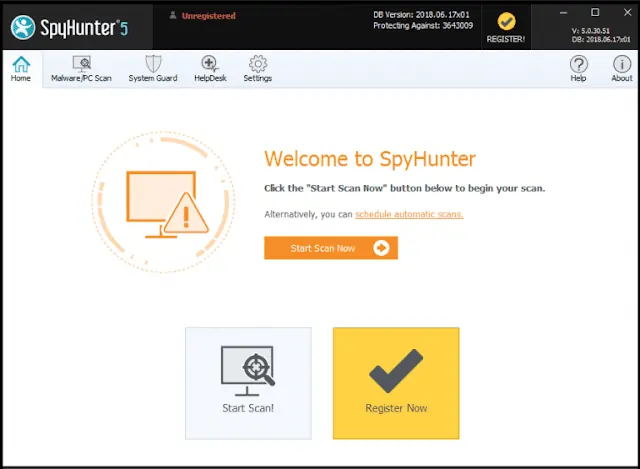
- Software will scan your PC for all hidden threats and viruses on your system.
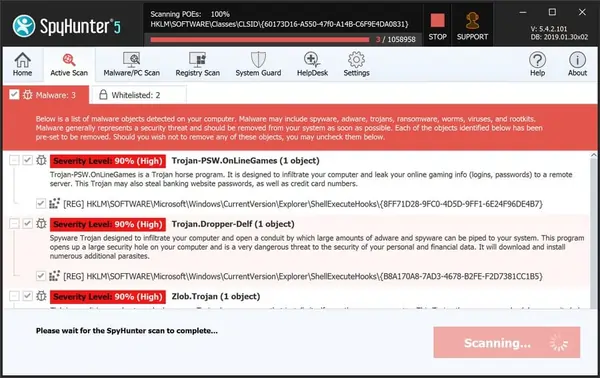
- Click on Next button to see results and delete “A Payment Has Been Posted On Your Card” Email Scam and other threats.
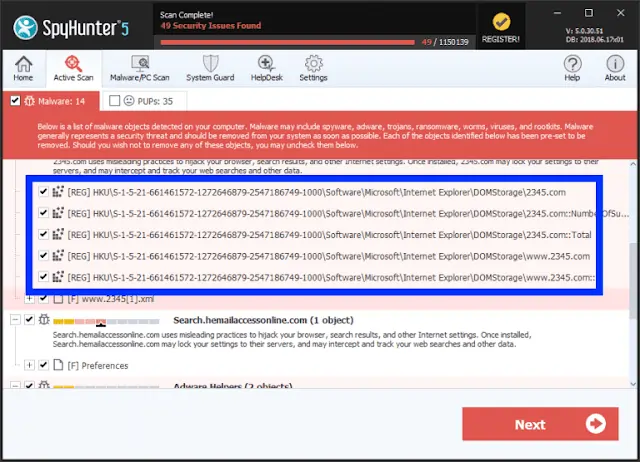
Manual “A Payment Has Been Posted On Your Card” Email Scam Removal Guide
- You have done this before, which means you have experience in removing the virus manually;
- That you know your way around PC and all necessary process and applications;
- You know about Registry entry and the Serious repercussions of any mistake;
- Make sure you can reverse any mistake made during “A Payment Has Been Posted On Your Card” Email Scam manual removal.
If you don’t attain any of the above standards, then manual removal could be a very risky idea. It is most likely best for you to use the Automatic Malware Removal Tool to find and delete “A Payment Has Been Posted On Your Card” Email Scam, which is totally secure and efficient method.
Compatible with: Windows 11/10/8/7 (32 Bit and 64 Bit)
Start PC in safe mode with networking
- Press Windows Key + R buttons together on the keyboard.
- Type msconfig in the Run Box then click OK button.
- Click on Boot tab then System configuration window will appear.
- Choose Safe Boot, check network box, Click Apply, and press OK button.
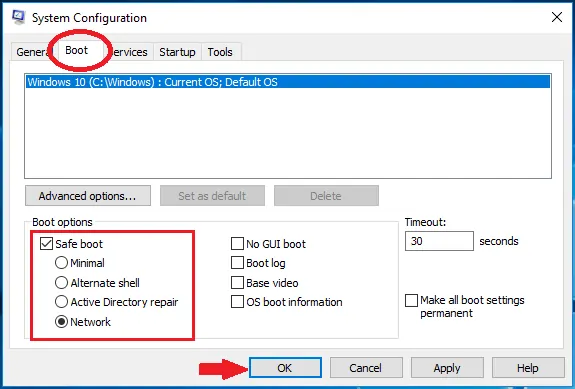
Kill Malicious Process From Task Manager
- Press Windows Key + R buttons together on the keyboard.
- Type taskmgr in Run Box and then click OK button.
- Find “A Payment Has Been Posted On Your Card” Email Scam related or any malicious process.
- Now right-click on it then click End process.
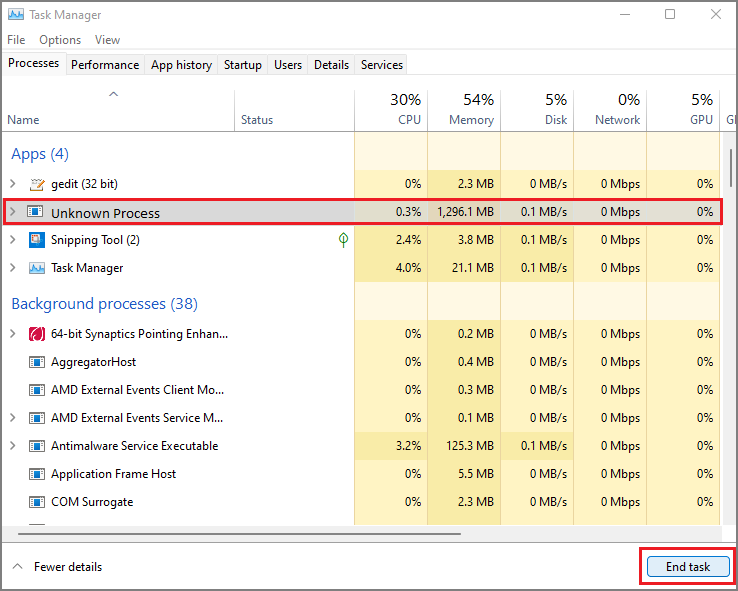
How To Uninstall “A Payment Has Been Posted On Your Card” Email Scam from Windows PC
- First of all Press Windows Key + R buttons together.
- Type appwiz.cpl in the Run Box and then click OK button.
- Now Programs and Features windows will appear on the screen.
- Find and remove all “A Payment Has Been Posted On Your Card” Email Scam related or malicious programs.
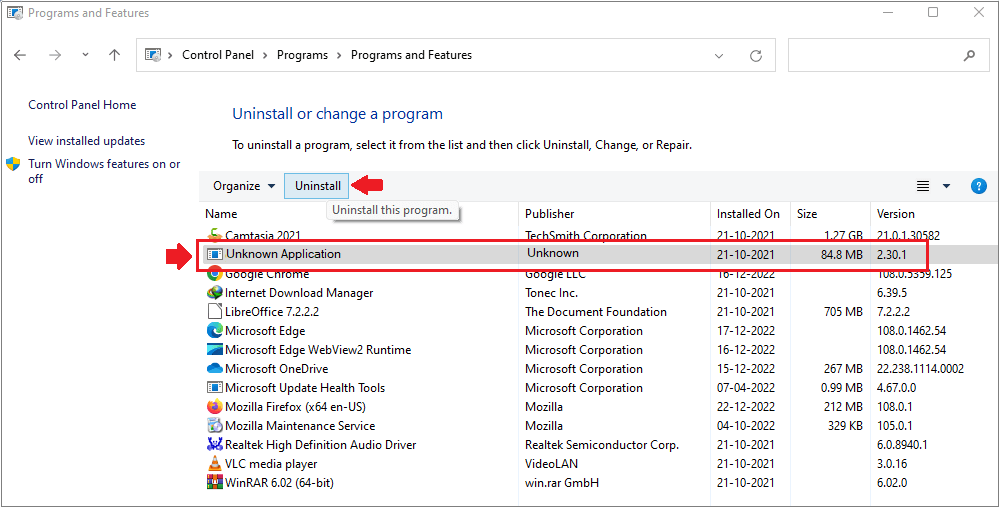
Remove Virus related Windows Registry entries
- Press Windows Key + R buttons together on the keyboard.
- Type regedit in Run Box and then click OK button.
- Registry Editor will open, then press CTRL +F buttons together.
- Now type “A Payment Has Been Posted On Your Card” Email Scam and then click on Find Next button.
- Find all the related entries and delete them one by one
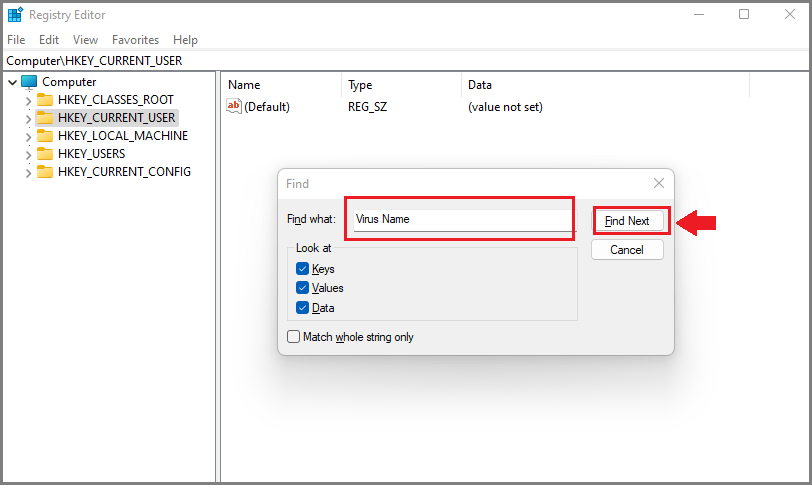
Warning: Meddling with Windows Registry files might not be a good idea if you don’t have advanced knowledge about registry files. Deleting the wrong file can break down your entire system. Proceed at your own risk, or just skip this step. You can choose the Automatic Removal method and avoid all the problems.
Remove Enuebenet.biz From MacOS
If you are a mac user, and your machine got infected by this nasty malware then you need to remove it as soon as possible. Although Mac systems are quite safe they still do get infected. So you can delete this infection using the below steps:Stop Malicious Program From Activity Monitor
- First, you need to open Utilities folder on your Mac system.
- Find the Activity Monitor icon and double-click on it to open it.
- Find Enuebenet.biz related process, click the cross button from the upper left side corner to end task.
- A pop-up dialogue box will appear on the screen, click on the Force Quit button.
Remove Virus From Application Folder
- First, go to the Dock option (bottom of your screen) then click on Finder App.
- Now you have to open the Applications Folders to see all the programs.
- Find Enuebenet.biz or any other unwanted program then move it to Trash.
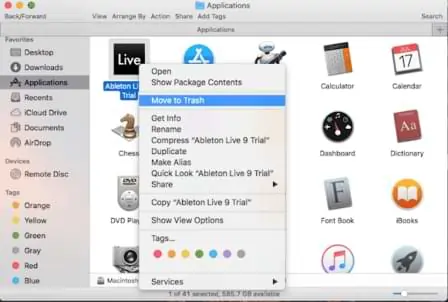
Remove Enuebenet.biz Related Files From Mac
When any program is installed on your Mac, it creates several files on your system that support the functioning of that application. If you need to remove any virus from your Mac, then you need to delete all related files completely. These files could be found at :- LaunchAgents
- Application Support
- LaunchDaemons
- First of all press the Command+Shift+G buttons together on your keyboard.
- Now you can see Go To Folder option on your Mac screen.
- Type in /Library/LaunchAgents in the text field and click on Go button.
- Find and remove any Enuebenet.biz related or malicious file.
Attention: If you are not tech-savvy, then it could be quite difficult to remove Enuebenet.biz manually from your Mac. The best way is to download SpyHunter Mac Anti-Malware and see if it can detect all hidden threats and viruses on your computer. It’s really super easy and you should give it a try.
How SpyHunter Mac Anti-Malware Works
- First, download the SpyHunter for Mac by clicking on the below button.
Some time threats like Enuebenet.biz keep getting back on the machine if all associated files are not removed. So you are advised to use a powerful Malware Removal Tool to run a thorough scan of your Mac and delete all threats at once.
- Now go to the Download Folder from the Docs and Install the SpyHunter Anti-Malware For Mac.
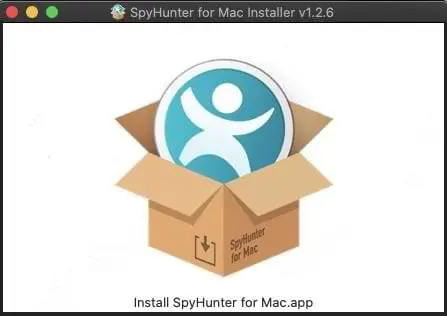
- Launch the Program, and click on Start Scan Now button.
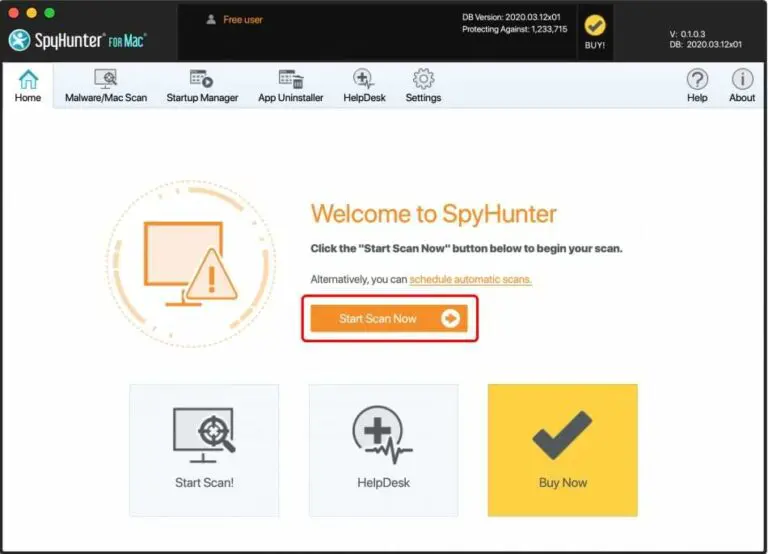
- Software will start running a a full scan of your mac instantly to look for any malware, virus, threats, malicious programs or security risk and so on.
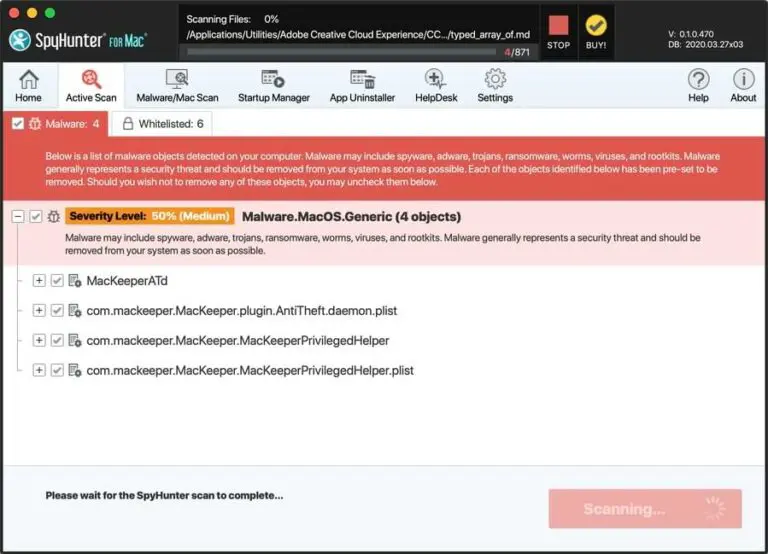
- Finally you will see a list of malwares detected on your mac, now click on Next button to start the removal process.
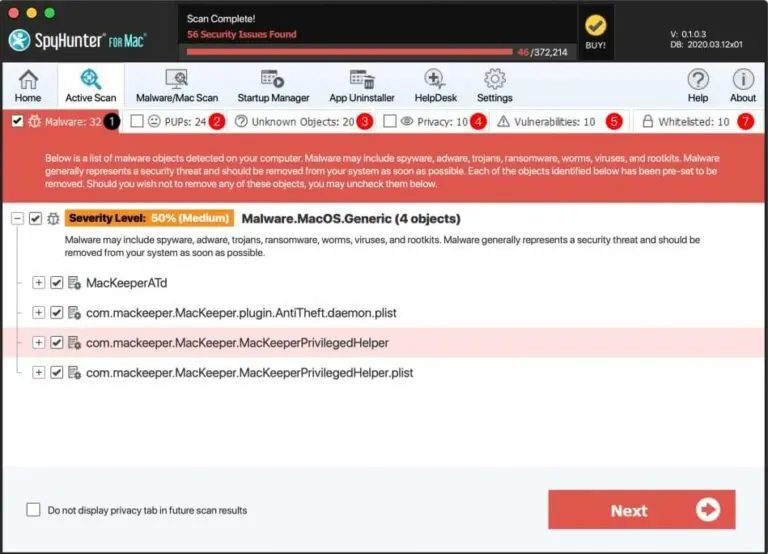
Remove “A Payment Has Been Posted On Your Card” Email Scam From Browser
Most of the time, threats like this make several changes to the browser which helps it to track victims’ online activities. It is important to completely remove “A Payment Has Been Posted On Your Card” Email Scam from the browser or it may come back. Follow below steps to remove this infection from your browser.
Delete Malicious Extensions From Browser
Many spyware now has browser hijacking capabilities to show ads, offers, alerts, notifications, or stealing the personal information of the victim. Follow below steps to remove malicious extensions from your browser.
Remove “A Payment Has Been Posted On Your Card” Email Scam From Google Chrome
Note : Type or copy-paste – chrome://extensions in the URL bar of Google Chrome then press ENTER button to open the extensions page directly or follow below steps.
- Open Google Chrome browser, click the Menu (⋮) option from the upper right corner.
- Select More tools then click on Extensions option to find all installed Extensions on chrome.
- Choose “A Payment Has Been Posted On Your Card” Email Scam related extensions then click the trash can icon to remove completely.
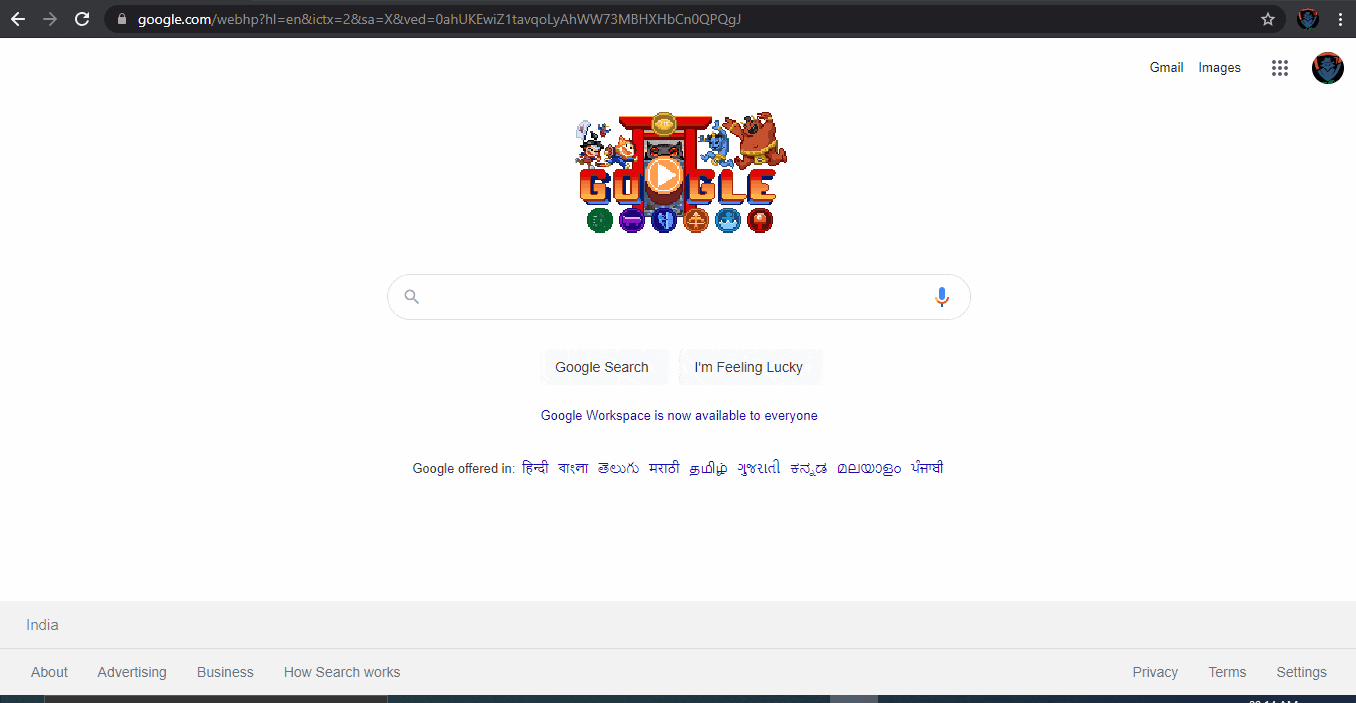
Remove “A Payment Has Been Posted On Your Card” Email Scam From Mozilla Firefox
Note: Type or copy-paste – about:addons in URL bar Firefox then hit ENTER button to open the extensions page directly or follow below steps.
- Open Mozilla Firefox browser, click on Menu (☰) option from the upper right corner.
- Select Add-ons option from the drop-down menu of the list.
- Choose the Extensions option to see all installed extensions on your browser.
- Choose “A Payment Has Been Posted On Your Card” Email Scam related extensions then click on Remove button.
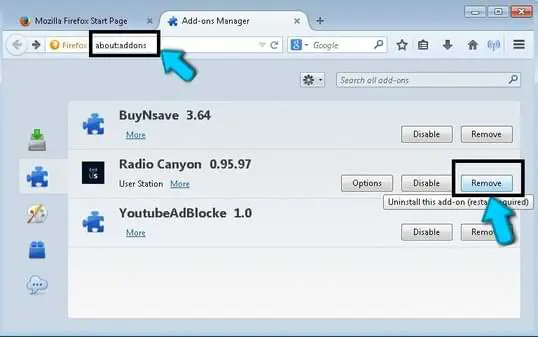
Remove “A Payment Has Been Posted On Your Card” Email Scam From Microsoft Edge
- Open MS Edge browser, click on More Tools (⋮) option from the upper right corner.
- Select Extensions option from the drop-down menu to see extensions on your browser.
- Choose “A Payment Has Been Posted On Your Card” Email Scam related extensions then click on Uninstall button to remove it.
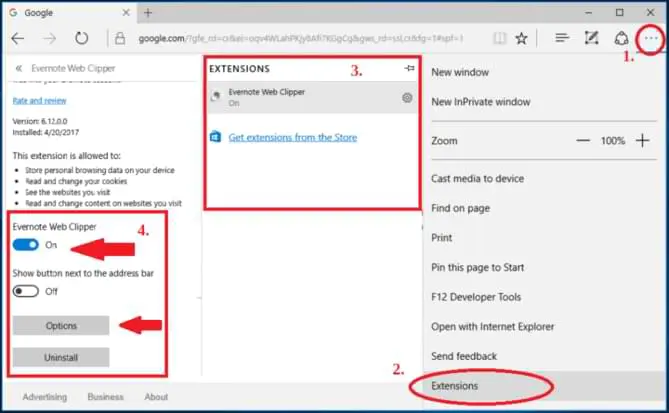
Remove “A Payment Has Been Posted On Your Card” Email Scam From Apple Safari
- Open Safari browser then tap on Preferences option from Safari menu.
- Open the Extensions tab, find “A Payment Has Been Posted On Your Card” Email Scam related extensions then click Uninstall button.
- Finally, again click the Uninstall button to remove the extension completely.
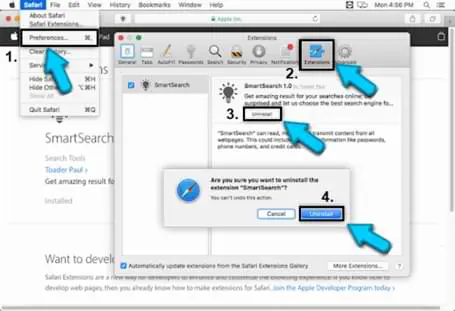
Remove “A Payment Has Been Posted On Your Card” Email Scam From Internet Explorer
- Open Internet Explorer then click on Menu option from the upper right corner.
- Select manage Add-ons option from drop-down list to see installed extension.
- Find “A Payment Has Been Posted On Your Card” Email Scam related extensions and click on Disable button to remove it.
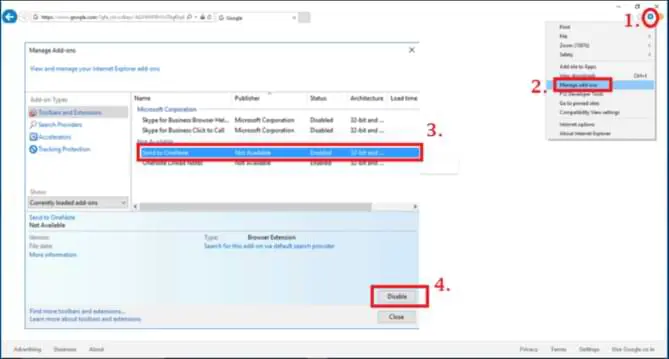
Reset Browser Setting to Default
Once you remove “A Payment Has Been Posted On Your Card” Email Scam from your browser, you might want to reset the browser to default settings to reset any changes made by the virus. Follow below steps for that :Reset Google Chrome Web Browser
- Open Google Chrome, click on Menu (⋮) then select settings option.
- On Settings page, scroll down to the bottom, click Show Advanced settings option.
- From Reset and clean up click on Restore settings to their original defaults.
- Finally, click on Reset Settings button to reset your chrome browser.

Reset Mozilla Firefox Browser
- Open Mozilla Firefox browser, click on Menu (☰) option, and select (?) icon.
- Click on Troubleshooting Information option from the drop-down menu.
- Then press the Refresh Firefox button and give confirmation.
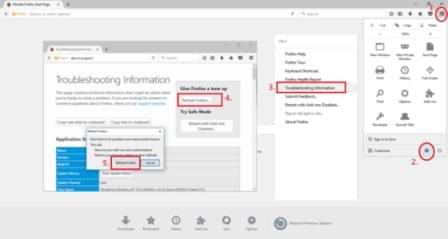
Reset MS Edge Browser
- Open MS Edge browser, click on More Tools (⋮) option, and select settings.
- Click on Choose what to clear Option, choose first three options then click on Clear button.
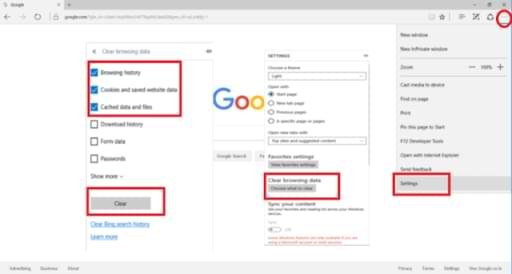
Reset Safari To Default
- Open Safari browser, tap on Safari menu, and select Reset Safari option.
- Now check all the boxes and then finally click on Reset button.
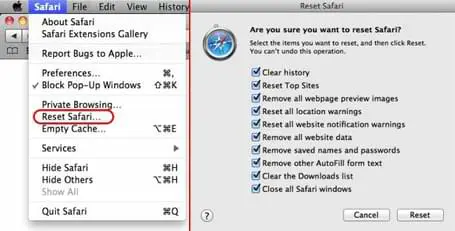
Reset Internet Explorer Browser
- Open Internet Explorer then click on Menu icon and hit Internet options.
- Visit Advanced tab, click Reset button, check Delete personal settings option, and hit Reset button.
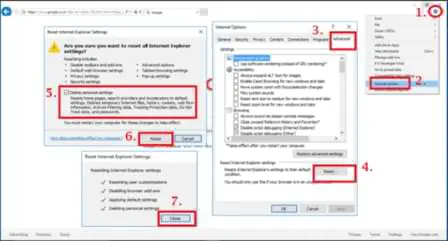
How to Enable Browser Protection
Follow the below steps to enable built-in dangerous site protection in your web browsers. You can follow the same steps if you want to stop the malware protection on your browser.
Google Chrome – Dangerous Sites Protection
- Open your Chrome web browser, type “chrome://settings” in the URL bar, and press Enter.
- Got to bottom of the page and select “Show advanced settings” option.
- Look for the Privacy and security section then click on Sync and Google services.
- Now turn on the Safe Browsing (Protect you and your device from dangerous sites) option.
Safari Browser – Change Security preferences in Safari
- Open your Safari web browser, then tap on the Safari menu and select Preferences.
- Now you have to open the Security options on your Safari browser.
- Check Warn When Visiting a Fraudulent website box from the Fraudulent Sites section.

Mozilla Firefox – Block Attack Sites and Web Forgeries
- Open your Firefox web browser, click on Menu (☰) and select Options from the list.
- Now click on the Security option and then select the following items:

- Warn me when sites try to install add-ons
- Block reported attack sites
- Block reported web forgeries
Edge Browser – Activate SmartScreen Filter
- Open your MS Edge web browser, click on More (⋮) icon from the upper right corner.
- Click on the Settings option from the Edge menu drop-down list.
- Scroll down and find View Advanced Settings option then open it.
- Turn ON the “help protect my PC from malicious sites and downloads with SmartScreen Filter” option.

Internet Explorer – Activate Microsoft SmartScreen Filter
- Open your IE web browser, then click on Menu icon and hit Safety options.
- Now click on the SmartScreen Filter option from the drop-down list.
- Turn on SmartScreen Filter and restart your browser.

If you made these settings on your browser then phishing and malware protection on your browser is now active. But it does not mean that your computer cannot get infected by threats. These settings may block some dangerous and suspicious sites but there are other ways through which hackers can target your PC. So you must download a powerful Anti-Malware application on your computer that provides real-time protection to ensure your system security.
Tips To Prevent “A Payment Has Been Posted On Your Card” Email Scam Virus in Future
- Use a good anti-virus, be it a free version but don’t use cracked security programs.
- Make sure that your Windows firewall is active, so it can block upcoming threats.
- Keep your Windows OS and other programs updated to avoid vulnerabilities.
- Download updates only from official websites, don’t use suspicious sites.
- Never download and install pirated software, games, or illegal patches on your PC.
- Do not open spam emails from an unknown sender and scan all attachments before opening.
- Never download freeware third-party programs from unreliable sources or websites.
- Avoid connecting your PC to unsafe public Wi-Fi to protect your privacy.
- You can also use a VPN to spoof your connection and avoid malicious sites.
- Create a system restore point on your system for security purposes.
- Keep backup of all your important files to avoid data loss.
Some time threats like “A Payment Has Been Posted On Your Card” Email Scam keep getting back on the machine if all associated files are not removed. You are advised to use a Powerful Anti-Malware Tool to run a thorough scan of your PC and delete all threats at once.
Compatible with: Windows 11/10/8/7 (32 Bit and 64 Bit)

Leave a Comment